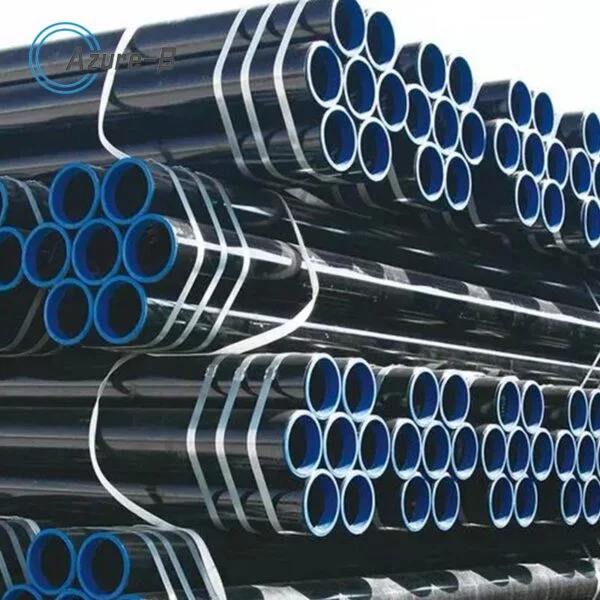The Versatile Properties of Carbon Steel Tubing and Its Many Applications
Carbon steel tubing offers a versatile, strong, and cost-effective solution for many industrial applications. This material combines the strength and durability of steel with the malleability and weldability of carbon. Let’s explore the unique properties, manufacturing, grades, and wide-ranging uses of carbon steel tubing.
What is Carbon Steel Tubing?
Carbon steel tubing refers to hollow steel piping containing carbon as its major alloying element. The amount of carbon typically ranges from 0.1% to 2.0% by weight in order to improve the material’s hardness and strength. Other alloying elements like manganese, phosphorus, and sulfur may be present in small quantities.
Carbon steel pipe is manufactured by first rolling steel into a hollow section known as a mother tube. Various techniques like electric resistance welding (ERW), seamless rolling, or extrusion are then used to form the mother tube into the desired size and shape tubing. The addition of carbon provides increased strength and hardness properties relative to low carbon steel.
Key Properties of Carbon Steel Tubing
There are several key properties that make carbon steel an excellent choice for tubing and piping systems:
-Strength – The carbon content increases the yield and tensile strength significantly versus low carbon steel. This allows carbon steel tubes to withstand high pressures and loads.
-Hardness – The hardness of carbon steel can be customized based on the percentage of carbon added during manufacturing. This hardness improves wear resistance.
-Machinability – Carbon steel grades are easier to cut, weld, form, and machine compared to stainless steel. This supports fabrication and installation.
-Cost – Carbon steel is generally more economical than stainless or alloy steel options. This makes it suitable for cost-sensitive applications.
-Corrosion Resistance – Carbon steel provides better corrosion resistance than low carbon steel, especially when galvanized. However, stainless steel is more corrosion resistant overall.
Common Grades of Carbon Steel Tubing
There are several standard grades defined by organizations like ASTM International and ASME. Some common structural grades include:
-A106 Seamless Carbon Steel Pipe – Seamless construction with 0.25-0.30% carbon content for high temperature applications. Used extensively in power plants.
-A500 Structural Tubing – Formed structurally round, square, or rectangular shapes. Yield strength of 46,000 psi. Used for support structures.
-A53 Pipe – ERW and seamless construction; common for mechanical and pressure purposes. Grade B is the most commonly used grade.
-1026 Seamless Mechanical Tubing – Medium carbon alloy tubing with 0.26-0.34% carbon. Used for mechanical and hydraulics systems.
-4130 Alloy Steel Tubing – Chromium-molybdenum tubing with excellent strength and toughness. Used structurally in aircraft and motorsports.
Additionally, variations like galvanized carbon steel tubing provide a protective zinc coating to improve corrosion resistance.

Applications of Carbon Steel Tubing
The versatility of carbon steel has led to its use across virtually every industry. Some of the most common applications include:
-Structural Engineering – Used in building, bridges, and construction where strength is critical. Standard structural steel shapes include tubes, pipes, I-beams, and angle iron.
-Mechanical Systems – Carbon steel tubing handles high pressures and temperatures in boiler systems, processing plants, compressed air systems, and hydraulic cylinders.
-Manufacturing Equipment – Tubing forms robust structural components in cranes, rigging, storage tanks, and processing equipment.
-Transportation – Steel tubing is lightweight yet strong, making it ideal for automotive systems, railways, aviation components, and other vehicles.
-Oil and Gas Industry – Drilling equipment, offshore platforms, pipelines, and processing facilities all extensively utilize carbon steel tubing.
-Furniture – The combination of strength and weldability allows steel tubing to be used creatively in furniture and retail display designs.
Clearly carbon steel tubing offers unmatched performance across many critical applications. When you need an affordable, strong, and versatile tubular component, carbon steel is sure to fit the bill. With the right grade selection and manufacturing technique, steel tubes can be tailored to handle your specific pressure containment, structural support, and mechanical system challenges.

